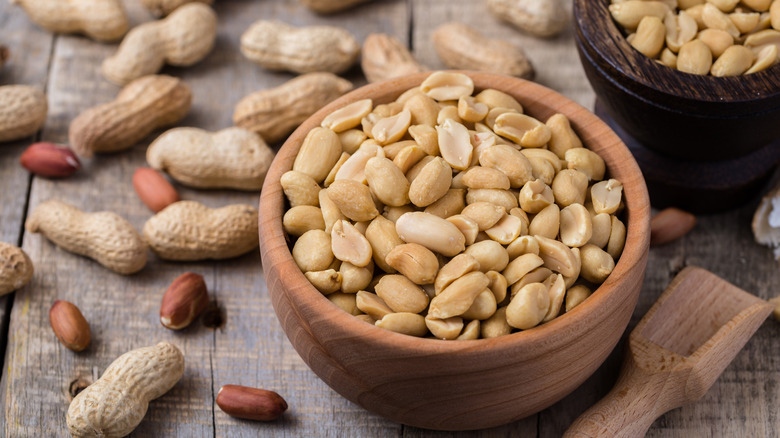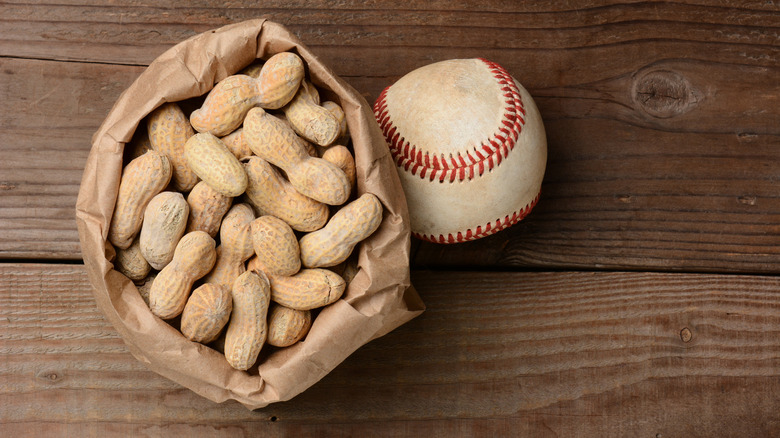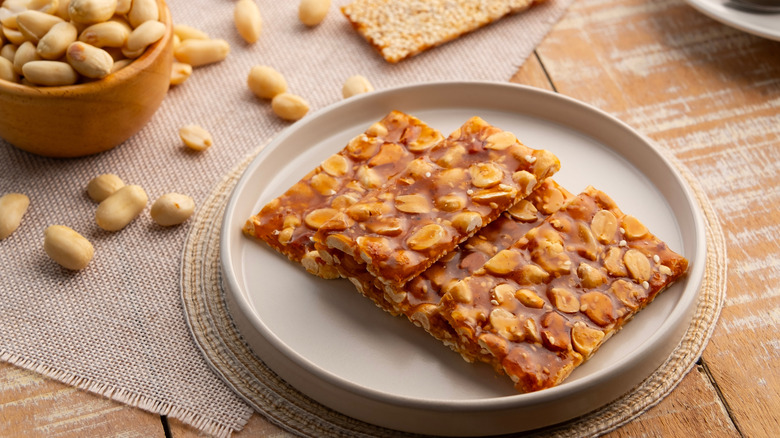4 Delicious Peanut Varieties, And How To Use Each One
Peanuts are among the most underrated ingredients, given their capacity to bring an unpredictable, delicious twist to any dish. These shelled legumes made their way to America around the 1700s and, with their bizarre origins, eventually became an indispensable part of the country's food culture, especially in the form of peanut butter. But with a wide variety available, choosing the right type of peanut for a specific recipe can be a tough nut to crack. Daily Meal spoke with an expert, Markita Lewis, MS, RD, marketing and communications manager for the National Peanut Board, who shared a few tips to make this selection easier.
Her top contender for desserts was the runner peanut – a medium-sized variety that is also the most widely consumed type in America. Lewis says they are "the best type of peanuts to use for baking and confections." So whether you're planning to whip up a creamy batter to bake peanut butter cup pies or use crushed peanuts in your crunchy peanut cookies, this is the variety you should reach for. "Runner peanuts are uniform in size, which makes their flavor consistent," she adds. Most likely, it is already present in your pantry, as these account for over 85% of the total U.S. production of peanuts. They are also popularly used to make peanut butter, a pantry staple in over 90% of households.
The 'gourmet' peanut of the lot
Markita Lewis says, "Virginia peanuts are considered the 'gourmet' peanut type because of their large size and premium characteristics." This oversized variety is widely acknowledged as the tastiest and crunchiest and is often called the Cadillac of peanuts. While some people prefer these nuts for making peanut butter due to their superior quality, Lewis believes, "Virginia peanuts are best suited for snacking instead of in peanut butter." This is why the variety is primarily consumed roasted or enjoyed in their shells.
If you're familiar with (and a fan of) ballpark peanuts, you've likely already savored Virginia peanuts. The moniker comes from the fact that they are a popular snack in baseball stadiums nationwide. Virginia peanuts account for about 10% of total U.S. production and are pricier than other varieties. Fun fact: The world's oldest preserved peanut is also a Virginia peanut, and the state of Virginia was the first in the nation to grow and commercialize these legumes.
Spanish and Valencia peanuts
If you're planning on making peanut brittle, Markita Lewis told Daily Meal that "Spanish peanuts are great for candy making and have a robust nutty flavor." This variety's key feature is its reddish-brown skin, which gives it a mildly bitter taste. It is the smallest in size and has a higher oil content than other peanut varieties.
Spanish-type peanuts account for only 2% of the total production in the U.S., yet the category includes a subvariety called OLé Spanish peanuts, which was introduced in 2015. For those looking for a heart-healthy option, this category of Spanish peanuts is a great choice, as it is high in oleic acid.
If you want to create a nice bowl of boiled peanuts — a classic Southern delicacy – Lewis recommends Valencia peanuts. "Valencia peanuts are excellent to be used as boiled peanuts as they have a slightly sweeter flavor and thinner shell," she remarks. They are the least-produced peanuts in the U.S. and account for only 1% of the total production. Due to their sweet flavor, they're also commonly used for all-natural peanut butter. So make your pick depending on the storm you plan to cook up and go (pea)nuts with your creation.


